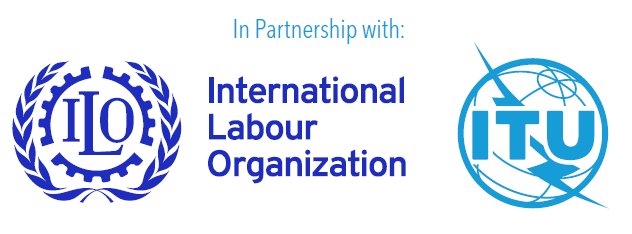1 Introduction
Accessible information and communication technology (ICT) can level the playing field for persons with disabilities across many areas of life, including education and employment. Technology can be a major catalyst for the full participation of persons with disabilities.
The Convention on the Rights of Persons with Disabilities (CRPD) is an international human rights treaty adopted by the United Nations in 2006 with the aim of ensuring that persons with disabilities enjoy the same human rights as persons without disabilities. As of 2022, over 95 per cent of countries have ratified the treaty, reflecting the firm global commitment to guaranteeing inclusion and equal rights for all people, without discrimination. Given that ICTs have an impact on almost all aspects of life and that many modern activities take place in the digital space, the CRPD recognizes digital accessibility as a key priority in ensuring that no one – including persons with disabilities – is left behind in the digital world. Article 9 of the CRPD identifies ICT and accessible technology as important enablers of access to systems and services, including education, health, employment and political participation.
Estimates indicate that 1.3 billion people around the world live with some form of disability (17 per cent of the global population), making them the largest minority group worldwide. However, only a small percentage of organizations make their digital offerings – including careers sites, job portals and electronic applications used by employers seeking to diversify their applicant pools – inclusive of disability. Organizations seeking to hire new talent are increasingly placing their job advertisements online and frequently require applications to be submitted digitally. In theory, this allows millions of job seekers to find and apply to jobs easily and quickly by filling out online application forms, while helping employers to systematically retrieve and assess information pertaining to thousands of candidates for a given job vacancy.
At the same time, research shows that the participation rate of persons with disabilities in the labour force remains very low (7 out of 10 persons with disabilities are inactive, compared with 4 out of 10 persons without disabilities).1 The median unemployment rate among persons with disabilities is also higher (7.6 per cent) than among persons without disabilities (6 per cent). It is worth remembering that anyone could, at any point, develop a temporary or permanent disability. All persons should therefore have the right to apply to a job vacancy and participate in the related selection process on equal and equitable terms, limited only by their knowledge, experience and suitability for the post rather than their personal disability. In this context, employers may unknowingly be discriminating against candidates with disabilities before they even reach the interview stage, as many online job application and recruitment systems have not been designed or developed with web accessibility requirements or the Universal Design Principles in mind. Studies show that almost half of all persons with disabilities who attempt to apply for a job online find it almost impossible to do so owing to accessibility challenges.2
Examples of critically severe barriers include:
• Application forms not indicating the kind of information required
• Videos lacking closed captioning
• Complex navigation
• Links not clearly indicating where they point to
• Images lacking alternative text descriptions.
The reason for this may be that many employers are not familiar with basic accessibility principles or best practices or how to apply them, and most do not understand the meaning and consequences of a website or online job application portal being inaccessible. Not only may this result in job seekers with disabilities becoming frustrated and employers missing out on potentially competent and capable talent, but also the organization could see its reputation negatively affected or could even face legal consequences on the accusation of discrimination on the grounds of disability.3
The goal of this guide is to help employers understand the accessibility and usability barriers that persons with disabilities may face when applying for a job online, in addition to the accessibility and usability requirements that career websites and other digital tools used in recruitment processes should meet to support the overarching goal of preventing discrimination against persons with disabilities and promoting their inclusion in employment.
